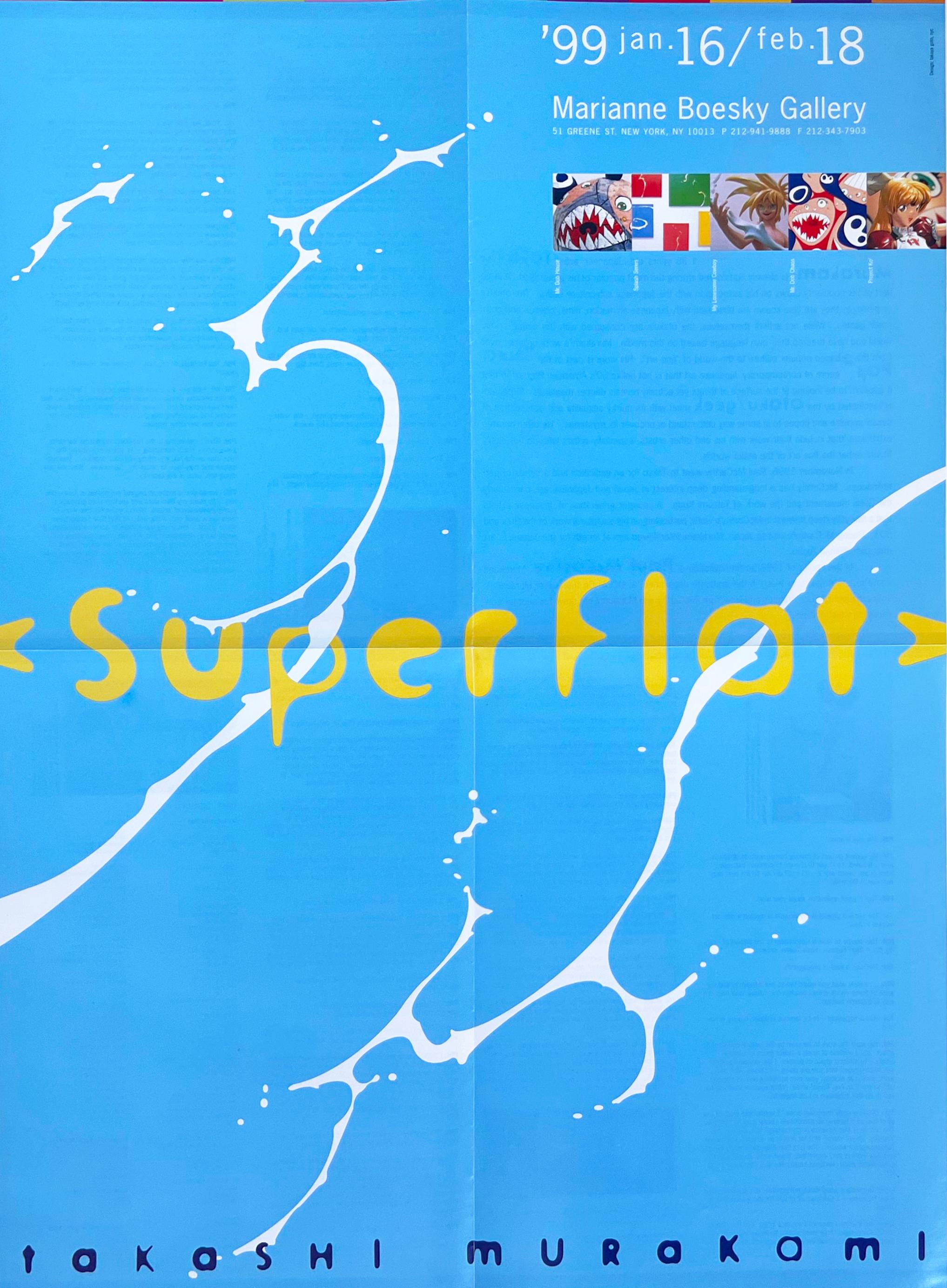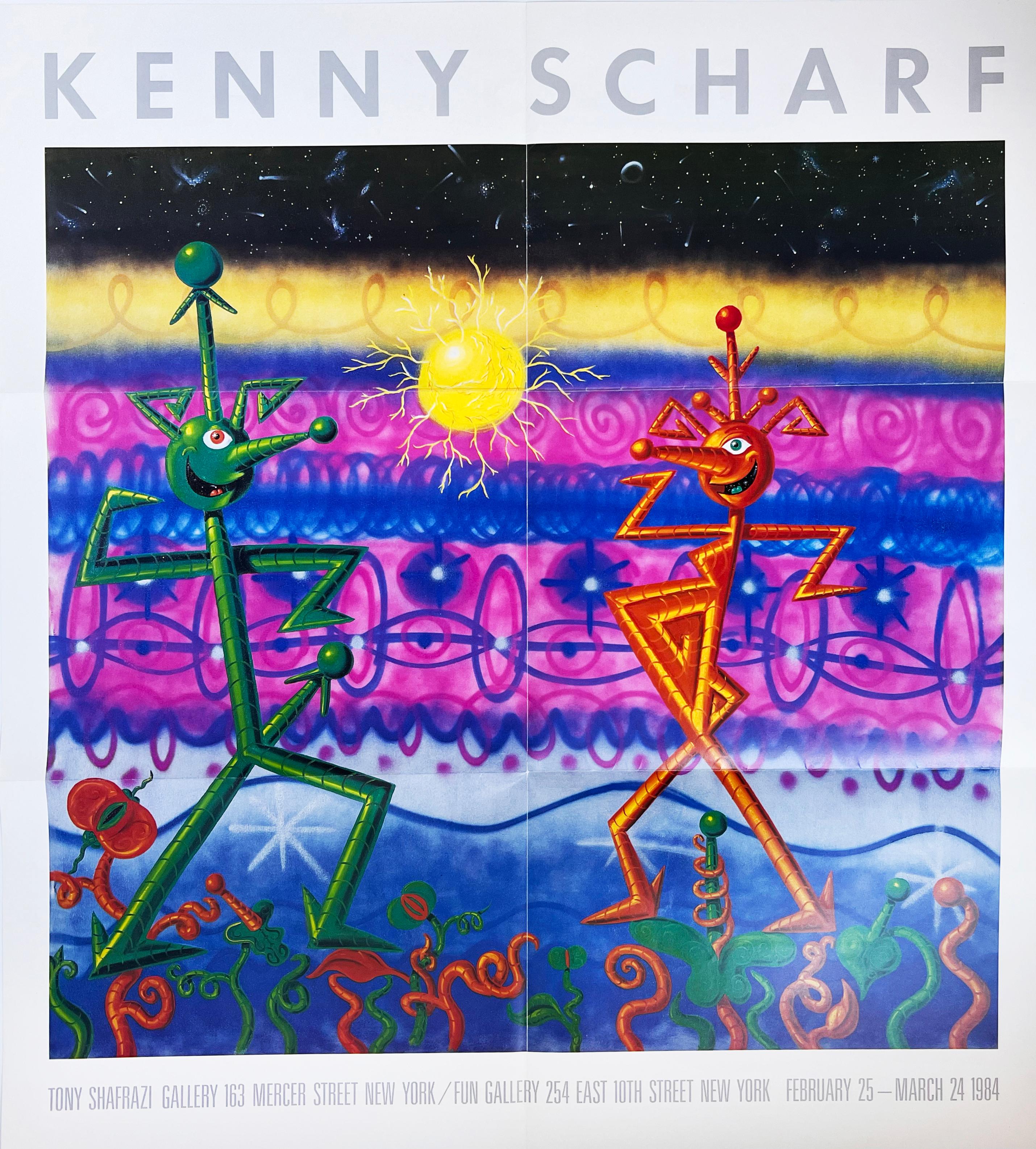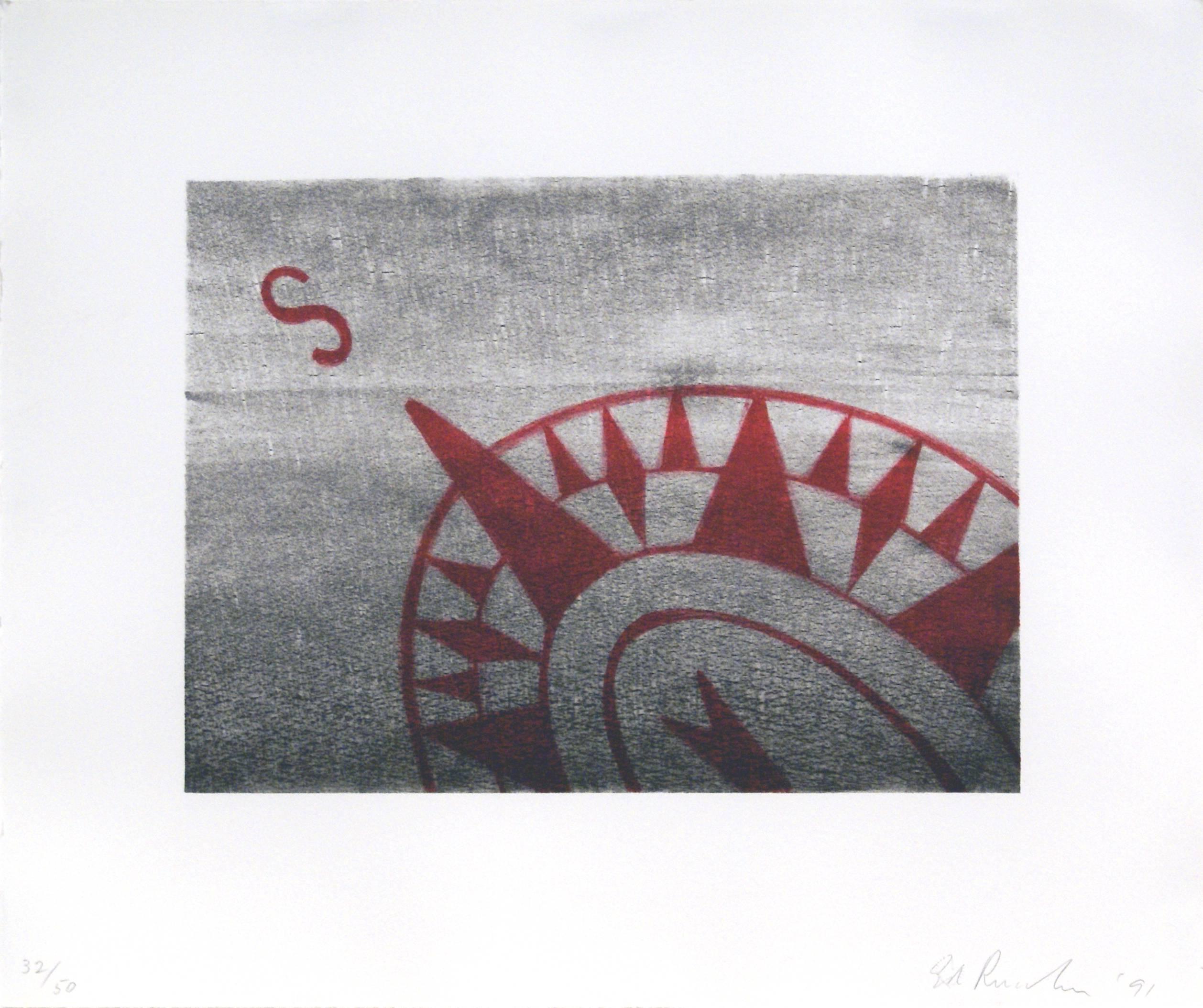Roy LichtensteinRoy Lichtenstein "Figures" 1978 (From Surrealist Series) Gemini G.E.L. Printers 1978
1978
About the Item
- Creator:Roy Lichtenstein (1923 - 1997, American)
- Creation Year:1978
- Dimensions:Height: 35 in (88.9 cm)Width: 26 in (66.04 cm)
- Medium:
- Movement & Style:
- Period:
- Condition:
- Gallery Location:Detroit, MI
- Reference Number:1stDibs: LU1286112744522
Roy Lichtenstein
Roy Lichtenstein is one of the principal figures of the American Pop art movement, along with Andy Warhol, James Rosenquist, Claes Oldenburg and Robert Rauschenberg.
Drawing inspiration from comic strips, Lichtenstein appropriated techniques commercial printing in his paintings, introducing a vernacular sensibility to the visual landscape of contemporary art. He employed visual elements such as the halftone dots that comprise a printed image, and a comic-inspired use of primary colors gave his paintings their signature “Pop” palette.
Born and raised in New York City, Lichtenstein enjoyed Manhattan’s myriad cultural offerings and comic books in equal measure. He began painting seriously as a teenager, studying watercolor painting at the Parsons School of Design in the late 1930s, and later at the Art Students League, where he worked with American realist painter Reginald Marsh. He began his undergraduate education at Ohio State University in 1940, and after a three-year stint in the United States Army during World War II, he completed his bachelor’s degree and then his master’s in fine arts. The roots of Lichtenstein’s interest in the convergence of high art and popular culture are evident even in his early years in Cleveland, where in the late 1940s, he taught at Ohio State, designed window displays for a department store and painted his own pieces.
Working at the height of the Abstract Expressionist movement in the 1950s, Lichtenstein deliberately eschewed the sort of painting that was held in high esteem by the art world and chose instead to explore the visual world of print advertising and comics. This gesture of recontextualizing a lowbrow image by importing it into a fine-art context would become a trademark of Lichtenstein’s artistic style, as well as a vehicle for his critique of the concept of good taste. His 1963 painting Whaam! confronts the viewer with an impact scene from a 1962-era issue of DC Comics’ All American Men of War. Isolated from its larger context, this image combines the playful lettering and brightly colored illustration of the original comic with a darker message about military conflict at the height of the Cold War. Crying Girl from the same year featured another of Lichtenstein’s motifs — a woman in distress, depicted with a mixture of drama and deadpan humor. His work gained a wider audience by creating a comic-inspired mural for the New York State Pavilion of the 1964 World's Fair, he went on to be represented by legendary New York gallerist Leo Castelli for 30 years.
In the 1970s and ’80s, Lichtenstein experimented with abstraction and began exploring basic elements of painting, as in this 1989 work Brushstroke Contest. In addition to paintings in which the brushstroke itself became the central subject, in 1984 he created a large-scale sculpture called Brushstrokes in Flight for the Port Columbus International Airport in Ohio. Still Life with Windmill from 1974 and the triptych Cow Going Abstract from 1982 both demonstrate a break from his earlier works where the subjects were derived from existing imagery. Here, Lichtenstein paints subjects more in line with the norms of art history — a pastoral scene and a still life — but he has translated their compositions into his signature graphic style, in which visual elements of printed comics are still a defining feature.
Lichtenstein’s work is represented in the collections of the Metropolitan Museum of Art, the Museum of Modern Art, Tate Modern, and many others. He was awarded National Medal of Arts in 1995, two years before he passed away.
Find a collection of Roy Lichtenstein prints, drawings and more on 1stDibs.
- ShippingRetrieving quote...Ships From: Detroit, MI
- Return PolicyA return for this item may be initiated within 14 days of delivery.
- Helen Frankenthaler What Red Lines Can Do Series, Screen PrintBy Helen FrankenthalerLocated in Detroit, MIONE WEEK ONLY SALE "Untitled" lithograph from Frakenthaler's What Red Lines Can Do Series. Signed and dated, with the numbers 55/9/75 on the lower front right. Color screen print on white arches handmade cold press paper. Helen Frankenthaler was born on December 12, 1928 in New York City, the daughter of a New York Supreme Court judge and a family of Jewish immigrants from Germany who emphasized culture and intellectual pursuits and continue to be active to this day such as through nephew, the artist and photographer Clifford...Category
1970s Abstract Expressionist Abstract Prints
MaterialsLithograph
- Lance Lawlor Lithograph "Design in Black & White" Geometric AbstractLocated in Detroit, MI"Design in Black & White" is a lithograph by the well-known Michigan designer Lance Lawlor. He was a Master of linear and decorative design and this print displays the talent for which he was sought after. Lance Stephen Lawlor was born January 6, 1955, in Detroit, Michigan. He attended the University of Michigan, graduating with a BFA in 1975 from the Penny W. Stamps School of Art & Design. He was a student of world renown costume designers of the 1930s-1950s, especially Adrian Adolph...Category
1990s Contemporary Abstract Prints
MaterialsLithograph
- "Untitled IV", Abstract Aquatint Color Etching Lithograph, Signed and NumberedLocated in Detroit, MI"Untitled IV" is a work that displays James Hansen's intense colors and shapes of his abstract and surrealist style. This print made with etching and aquatints with hand-coloring on Arches paper pops with the illusion of three dimensions set against a muted background of esoteric shapes and symbols. The print is 32-3/4 x 25-3/4 inches and is signed and numbered from an edition of 30 by the artist. Numbered edition may not necessarily be number 20 as there are multiple prints in the possession of Collected Detroit. James Hansen was born in 1951 in New Haven, Connecticut and spent most of his artistic career in Provincetown, Massachusetts where he befriended and worked with Paul Bowen, Claude Simard...Category
1990s Abstract Prints
MaterialsEtching, Lithograph, Aquatint
- "Untitled I", Abstract Aquatint Color Etching Lithograph, Signed and NumberedLocated in Detroit, MI"Untitled I" is a work that displays James Hansen's intense colors and shapes of his abstract and surrealist style. This print made with etching and aquatints with hand-coloring on Arches paper pops with the illusion of three dimensions set against a muted background of esoteric shapes and symbols. The print is 32-3/4 x 25-3/4 inches and is signed and numbered from an edition of 30 by the artist. Numbered edition may not necessarily be number 12 as there are multiple prints in the possession of Collected Detroit. James Hansen was born in 1951 in New Haven, Connecticut and spent most of his artistic career in Provincetown, Massachusetts where he befriended and worked with Paul Bowen, Claude Simard...Category
1990s Abstract Prints
MaterialsEtching, Aquatint, Lithograph
- "Holiday", Abstract Drypoint Etching and Aquatint, Numbered and SignedBy Richard JacobsLocated in Detroit, MI"Holiday" is a work that displays Richard Jacobs early Balinese influence. This abstract work made with drypoint etching manifests a layer of depth and contrast that is achieved through an Indonesian technique of drawing the lines of the resist or printing it with a copper stamp that allows an artisan to selectively color the work through the soaking process. "Holiday" is exemplary of this earlier aquatint process before Jacobs would go on to apply a diversity of colors to his work. The print is 39 x 29 inches and is signed and numbered from an edition of 30 by the artist. Numbered edition may not necessarily be number 17 as there are multiple prints in the possession of Collected Detroit...Category
1990s Abstract Prints
MaterialsDrypoint, Etching, Aquatint, Lithograph
- "Untitled II", Abstract Aquatint Color Etching Lithograph, Signed and NumberedLocated in Detroit, MI"Untitled II" is a work that displays James Hansen's intense colors and shapes of his abstract and surrealist style. This print made with etching and aquatints with hand-coloring on Arches paper pops with the illusion of three dimensions set against a muted background of esoteric shapes and symbols. The print is 32-3/4 x 26 inches and is signed and numbered from an edition of 30 by the artist. Numbered edition may not necessarily be number 28 as there are multiple prints in the possession of Collected Detroit. James Hansen was born in 1951 in New Haven, Connecticut and spent most of his artistic career in Provincetown, Massachusetts where he befriended and worked with Paul Bowen, Claude Simard...Category
1990s Abstract Prints
MaterialsEtching, Aquatint, Lithograph
- Takashi Murakami 'Superflat' exhibition poster (vintage Takashi Murakami)By Takashi MurakamiLocated in NEW YORK, NYTakashi Murakami Superflat Exhibition Poster 1999: Rare 1990s exhibit poster designed by Murakami and published by Marianne Boesky Gallery New York...Category
21st Century and Contemporary Pop Art Abstract Prints
MaterialsLithograph, Offset
- Kenny Scharf Tony Shafrazi gallery 1984 (Kenny Scharf 1984)By Kenny ScharfLocated in NEW YORK, NYVintage 1984 Kenny Scharf Exhibition Poster: Original Kenny Scharf illustrated exhibition poster published by Tony Shafrazi Gallery in conjunction with the Fun Gallery, New York, NY 1984. Fun, cool, vibrant original 1980s pop art without breaking the bank. Medium: Offset Lithograph, 1984. Dimensions: 23 x 24.75 inches (folded open). Condition: Fold-lines as issued; good overall vintage condition. Muralist, painter, sculptor, and installation artist Kenny Scharf (American, b. 1958) is best known for his fantastical, large-scale paintings of anthropomorphic animals...Category
1980s Pop Art Animal Prints
MaterialsOffset, Lithograph
- Keith Haring illustated New Music Distribution Service 1986By Keith HaringLocated in NEW YORK, NYKeith Haring New Music Distribution Service 1986: 1980s music distribution catalog featuring original cover art by Keith Haring. Features Haring pri...Category
1980s Pop Art Prints and Multiples
MaterialsOffset, Lithograph
- SouthBy Ed RuschaLocated in London, GBLithograph on white Rives BFK paper Proofs: 10AP, 1BAT, 2CTP, 2PP, 4 publisher's proofs, 1 shop proof, 5TP Inscriptions: Signed and dated in pencil lower right, "Ed Ruscha 91", numbe...Category
Late 20th Century Pop Art Abstract Prints
MaterialsColor, Lithograph
- ART, Pop Art Lithograph by Jim Dine 1968By Jim DineLocated in Long Island City, NYArtist: Jim Dine Title: ART Year: 1968 Medium: Lithograph, signed and numbered in pencil Edition: 92/144 Paper Size: 35 x 24.75 in. (88.9 x 62.87 cm)Category
1960s Pop Art Interior Prints
MaterialsLithograph
- Once in a Lifetime (rare theatrical poster designed by Ed Ruscha in 1975) FramedBy Ed RuschaLocated in New York, NYEd Ruscha Once in a Lifetime, 1975 Offset lithograph poster on thin board Plate signature on the side, to the right of the Moss Hart and George Kaufman movie slate; also bears Ed Rus...Category
1970s Pop Art Abstract Prints
MaterialsBoard, Lithograph, Offset






